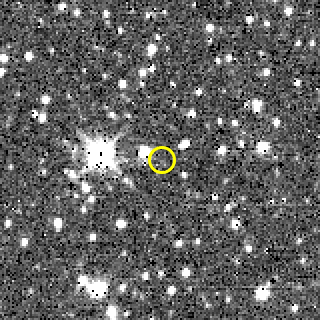Iocaste, also known as Jupiter XXIV, is a retrograde irregular satellite of Jupiter. It was discovered by a team of astronomers from the University of Hawaii including: David C. Jewitt, Yanga R. Fernandez, and Eugene Magnier led by Scott S. Sheppard in 2000, and given the temporary designation S/2000 J 3.
Iocaste orbits Jupiter at an average distance of 20.723 million kilometers in 632 earth days, at an inclination of 147° to the ecliptic (146° to Jupiter's equator) with an eccentricity of 0.2874.
It was named in October 2002 after Jocasta, the mother/wife of Oedipus in Greek mythology. The name ending in "e" was chosen in accordance with the International Astronomical Union's policy for designating outer moons with retrograde orbits.
Iocaste belongs to the Ananke group, believed to be the remnants of a break-up of a captured heliocentric asteroid.
The satellite is about 5 kilometres in diameter and appears grey (colour indices B−V=0.63, R−V=0.36), similar to C-type asteroids.
See also
- Moons of Jupiter
- Praxidike
References
Further reading
- Ephemeris IAU-MPC NSES
- Mean orbital parameters NASA JPL

![]()


